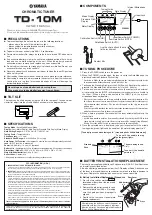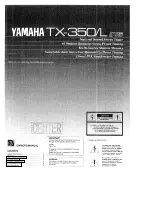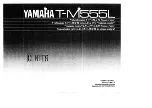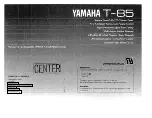
1
E
L E C R A F T
KA T 1
A U T O M A T I C A N T E N N A T U N E R
Assembly and Operating Instructions
E740024 Revision D, March 22, 2017. Copyright © 2017, Elecraft; All Rights Reserved
Introduction
The KAT1 internal automatic antenna tuner (ATU) allows nearly any random-length wire antenna to be
connected directly to the Elecraft K1 transceiver and used on one or more bands. The L-network
configuration can be used with coax-fed or end-fed wire antennas, or with balanced feedlines via a balun.
Unlike some internal auto-tuners, the KAT1 functions on receive as well as transmit. This provides an
increase in receive sensitivity and improves rejection of out-of-band signals.
The KAT1 uses latching relays to reduce current drain to nearly zero except when actually tuning. These
relays select appropriate combinations of inductance and capacitance, as well as either a capacitor-in or
capacitor-out L-network configuration. Tune-up is controlled by the KAT1's microprocessor, which also
supplies SWR or power information to be displayed on the K1's LCD. Once a match has been found,
matching parameters are saved so that the settings can be recalled immediately on any band change.
ATU parameters (L, C, SWR, etc.) can be viewed using the K1’s menu. Additional menu entries are
provided to do component-level troubleshooting all relays, inductors, and capacitors.
In addition to being one of the world’s smallest automatic antenna tuners, the KAT1 is very easy to build
and install. The KAT1 module plugs directly into the K1’s Filter board with no additional wiring. Gold
plated connectors and redundant connector pins are used to provide excellent reliability for field operation.
Specifications
L - C Ranges
L: approx. 0-5 µH in 16 steps; C: approx. 0-300 pF in 32 steps
Network Type
L-network (series L, shunt C); C switchable to transceiver or antenna side
Tuning time
1 to 8 seconds typical for initial tune-up; < 1/2 sec. to recall per-band settings
SWR Display
1.0:1 to 9.9:1
Current Drain
Approx. 10-30 mA during TUNE; < 5 mA at all other times
Size
5.0" (L) x 1.8" (D) x 0.5" (H) (12.7 x 4.6 x 1.3 cm)
i
Caution:
Some components in this kit can be damaged by static discharge. Before handling any
transistors or integrated circuits, always put on an anti-static wrist strap or touch any grounded, unpainted
metal surface.


































